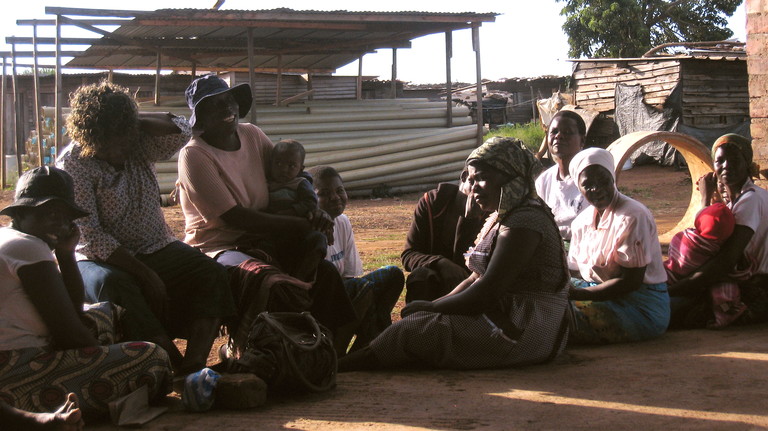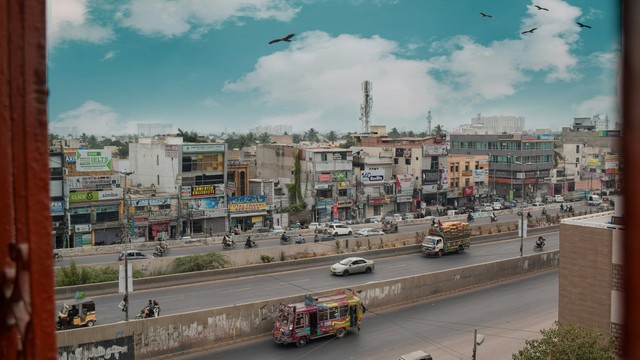Co-production in urban areas: evolving form, enduring presence
How far can ‘co-production’ improve the lives of the one in seven of the global population living in informal settlements without secure tenure or adequate access to services? Authors of the October 2018 issue of Environment and Urbanization (E&U) tackle this question by analysing the potentials and shortcomings of co-production.


Women living in informal settlements in Harare (Photo: Diana Mitlin/IIED)
Co-production most often refers to the joint delivery of services between residents (both individually and/or collectively) and another agency, typically the state. It now takes place through regular service provision or poverty-reduction programmes.
But it can also be informally negotiated through, for example, street-level council workers and local residents, or take place when state agencies catch up with and want to support community delivery efforts.
Providing services, empowering communities, changing relationships
Co-production can be multi-faceted, including design, planning, financing, implementation, monitoring and evaluation. However, it can also be the specific part of a programme – for example, retailing water through community-managed water kiosks.
‘Co-production of knowledge’, where practitioners and academics share knowledge and produce research is emerging as a concept, while co-production as a term is being used more broadly. But as discussions in E&U highlight, definitions matter!
Not all multi-agency or multi-partner collaboration is co-production. Experiences from Kenya (described by Lines and Makau) show that joint programming may not even be needed to achieve co-production. Government staff have changed the way they see their role in service delivery having observed how the social movement, Muungano waWanavijiji works with state agencies. Over two decades, interactions between local and national government in Kenya have shifted practices in both government and civil society.
Does co-production enhance urban development programming?
Urban programming in Afghanistan, Chile, Malawi and the Philippines demonstrate the potential of co-production. In Muntinlupa City (the Philippines), community mappers found that when local barangay (ward-level) officials are drawn in to map and profile informal settlements, their data is more likely to be accepted by government, making it easier to negotiate the provision required to address residents’ needs.
Co-production in fragile states such as Afghanistan highlights the significance of relationship building in post-conflict urban areas. These and other examples emphasise that co-production may help most by strengthening dialogue between residents and officials, alongside material improvements in services.
But efforts are constrained by other factors. In Lilongwe (Malawi), good community management of water kiosks is compromised when the partnering utility cannot provide a regular supply of water. Rules that define entitlements within a programme can also limit potential.
In Chile, some residents facing resettlement following a fire were able to develop new housing alternatives through co-production while others, including tenants and those without a substantiated land claim, had to relocate.
This programming approach cannot easily address inequalities that emerge in urban contexts, where basic services (e.g. housing, food, water) are highly commodified and there are considerable inequalities. Inclusion must not be assumed. Castán Broto and Alves Neves, explain how co-production approaches must be sensitive to who is being excluded and what the terms of inclusion are.
People are the change process
Changed relations that emerge from co-production bring significant advances in quality of, and access to, services. In this context, people are the ‘change process’ or catalyst that leads to more equitable development.
This can be seen in the Community Organization Development Institute (CODI) in Thailand with the upgrading of 2,557 local neighbourhoods (assisting 105,000 families). Through co-producing housing development and upgrading informal settlements, those in state and citizen organisations learnt about each other’s realities, enabling deeper relationships and more effective collaboration – resulting in a more joined-up service delivery.
Social movements and citizen groups have learned to be cautious in their engagement with the state: there are many ways that governments seek to co-opt such groups to their own agenda. However, co-production can empower residents’ groups to challenge constraints and negotiate improvements.
Used as one strategy among several, co-production helps organised residents build their understanding of state programming and identify allies within state agencies (Mitlin).
Within any particular programme, E&U authors agree that getting in early to help plan the process is important.
A first step is to move beyond interested individuals to institutionalise the process. Experience of the research programme Mistra highlights the importance of securing such gains. Deepening and broadening the engagement is critical.
Many groups use co-production as a strategy to develop in both scope and scale. For state authorities, this is working with multiple communities, leaders and activists. For community organisations, this is having the change to work with more local authority departments, and across local and national government.
The reshaping of urban processes within and beyond co-production
Exploring the current interest in co-production as a measure to secure urban transformation brings its strengths and weaknesses into focus – and with that, insights into further steps needed.
In Windhoek, the Shack Dwellers Federation of Namibia secured a co-productive approach to upgrading informal settlements, but failed to engage officials responsible for the overall city planning. Hence, low-income settlements remain in the north-west quadrant with new settlements increasingly distant from central areas (Chitekwe-Biti).
Both immediate material improvements and longer-term strategic positioning are relevant here; if and when community organisations negotiate their way into high-level planning, new opportunities may open up. At the same time, tools and tactics must be sensitive to the local context.
In Harare, a memorandum of understanding between SDI alliance members and the City of Harare has helped to overcome prejudice, secure recognition, and in turn extend relations beyond a key group of enthusiastic officials into other relevant departments (Shand). But in another context, alternative strategies may be needed.
Co-production is frequently criticised by those campaigning for better state provision, arguing that low-income households and communities should not have to contribute to service provision as this is not expected of more affluent residents. But an all-or-nothing approach – fully state-led provision or nothing – does not realistically represent of the options facing low-income urban residents given state agencies’ neglect and inability to provide appropriately designed and sensitively delivered services.
As this collection shows, there are no simple answers. While co-production builds capabilities, it has limitations. But a key point emerging is that co-production deepens and strengthens citizen engagement, enhancing provision of urban services that are essential to the well-being of these citizens.
In so doing it opens up new political opportunities and deepens and strengthens state engagement, increasing the capability of officials to work with low-income and disadvantaged citizens. As a result, politicians see there may be effective strategies beyond state-led delivery.



